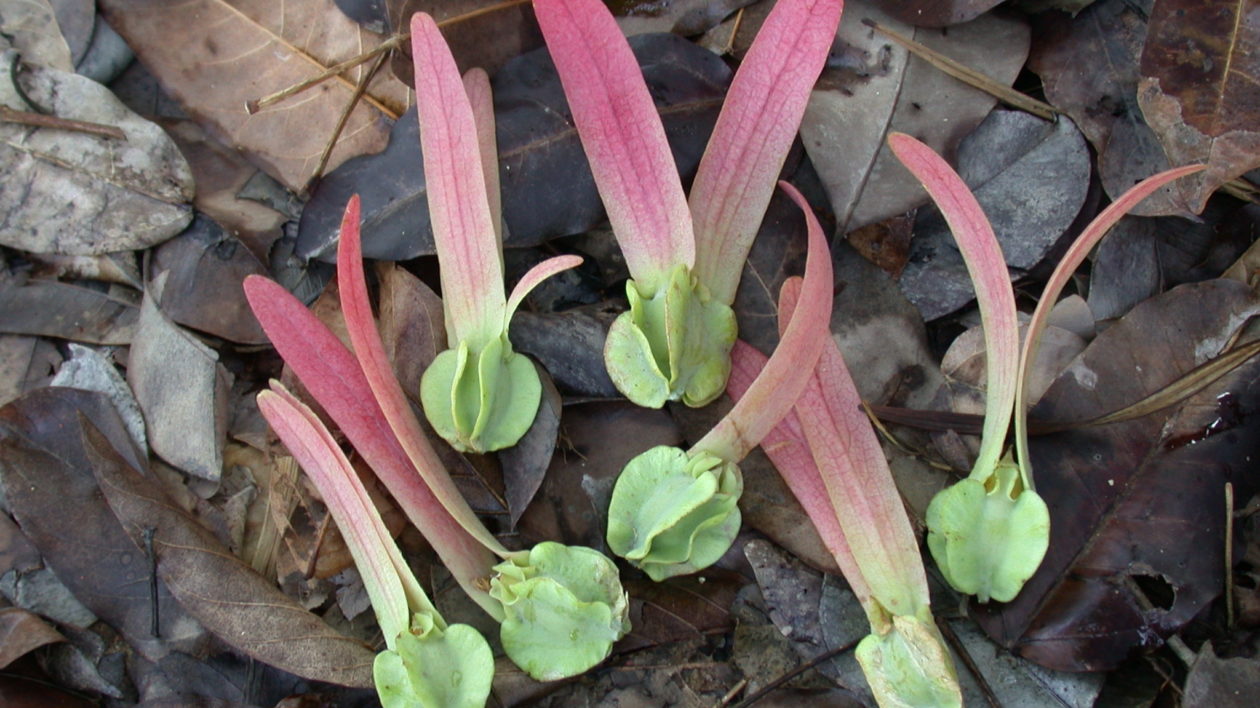Dipterocarps dominate Borneo’s famous rainforests. Trees from this family are the archetypal rainforest tree: Wide buttress roots anchor them to the earth, while their smooth, straight trunks soar skyward before branching into a high crown.
There are more than 500 species in the dipterocarp family, filling forests in Africa, Madagascar, South America, India, and Southeast Asia. They’re some of the world’s tallest trees, sometimes exceeding 100 meters (328 feet) in height, and they’re also one of the rainforest trees most valued by commercial loggers.
But while they’re synonymous with Southeast Asia today, dipterocarps didn’t originate here. New research from Indian scientists has uncovered that the dipterocarp family evolved in Africa and migrated to Southeast Asia via the Indian subcontinent, surviving asteroid impacts and volcanic eruptions along the way.
Even though dipterocarps dominate Southeast Asian forests, paleobotanists — scientists who study ancient plants — knew little about where the family evolved and their historic distributions.
“It’s hard to find fossils of leaves, wood, or flowers — what we would call macrofossils — for tropical ecosystems because they don’t preserve very well,” explains Shivaprakash Nagaraju, a scientist with The Nature Conservancy in India and author on the paper.
To understand the evolutionary history of dipterocarps, scientists had to turn to a less obvious type of fossil: microscopic fossilized pollen.

The research team analyzed fossil dipterocarp pollen from Africa and India, along with DNA sequences of living dipterocarp species. Their results, published recently in the journal Science, suggest that dipterocarps originated in tropical Africa during the mid-Cretaceous, about 102 million years ago. Then, around 70 million years ago, they dispersed into India via an ancient land bridge.
Shortly after dipterocarps made it to India, Earth experienced two simultaneous global disasters. The first calamity was the well-known asteroid impact in the Gulf of Mexico, around 66 million years ago. The second disaster was a massive volcanic eruption at a site known as the Deccan Traps, in western India, between 65 and 66 million years ago. There, a massive shield volcano erupted on-and-off for a period of about 30,000 years, blanketing an area of 1.5 million square kilometers, or half the size of modern-day India, with lava.
The resulting extinction event killed an estimated 75% of all life on Earth. Yet dipterocarps survived, and were perhaps aided by the nearby volcanic eruptions. Study author Vandana Prasad, of the Birbal Sahni Institute of Palaeosciences, explains that mineral-rich ash from the volcanic eruption, along with a humid climate, likely helped dipterocarps diversify in India.

Dipterocarps flourished in India as the continent continued to move northwards, eventually crashing into Asia. The collision allowed dipterocarps to spread to a new continent, but it also created the Himalayan Mountain chain. The new mountains altered monsoon patterns and deprived western India of rain. As India dried, its dipterocarp forests shrank.
Meanwhile, dipterocarps started taking over the forests of Southeast Asia. “Our results show that around 20 million years ago, dipterocarps started diversifying very, very fast,” says Nagaraju. “And at that time Southeast Asia was very wet, warm, and humid, which are very favorable conditions for them to diversify.”
That evolutionary boom gave rise to the rainforests of today. The dipterocarp forests of Southeast Asia, especially Indonesian Borneo, are amongst the most biodiverse places on earth. Unfortunately, dipterocarps are highly valued for commercial timber, leading to overharvesting that threatens both the forests and the biodiversity they harbor. For example, the island of Borneo lost 34% of its old-growth forests between 1973 and 2015.
Nagaraju says that biogeographical studies, like this one, are relevant to modern conservation efforts because they show how geology and climate shape the evolution of biodiversity. “Our analysis shows that dipterocarps evolved in a wet, seasonal climate, and they need these climate conditions to survive,” he says. As those conditions disappeared from Africa and India, so too did many dipterocarp species.
“When it comes to biodiversity, people always think about the present, but they don’t really think about what was there in the past,” says Nagaraju. “That natural history knowledge is so important, because if you don’t know how a species evolved you can’t protect them.”
